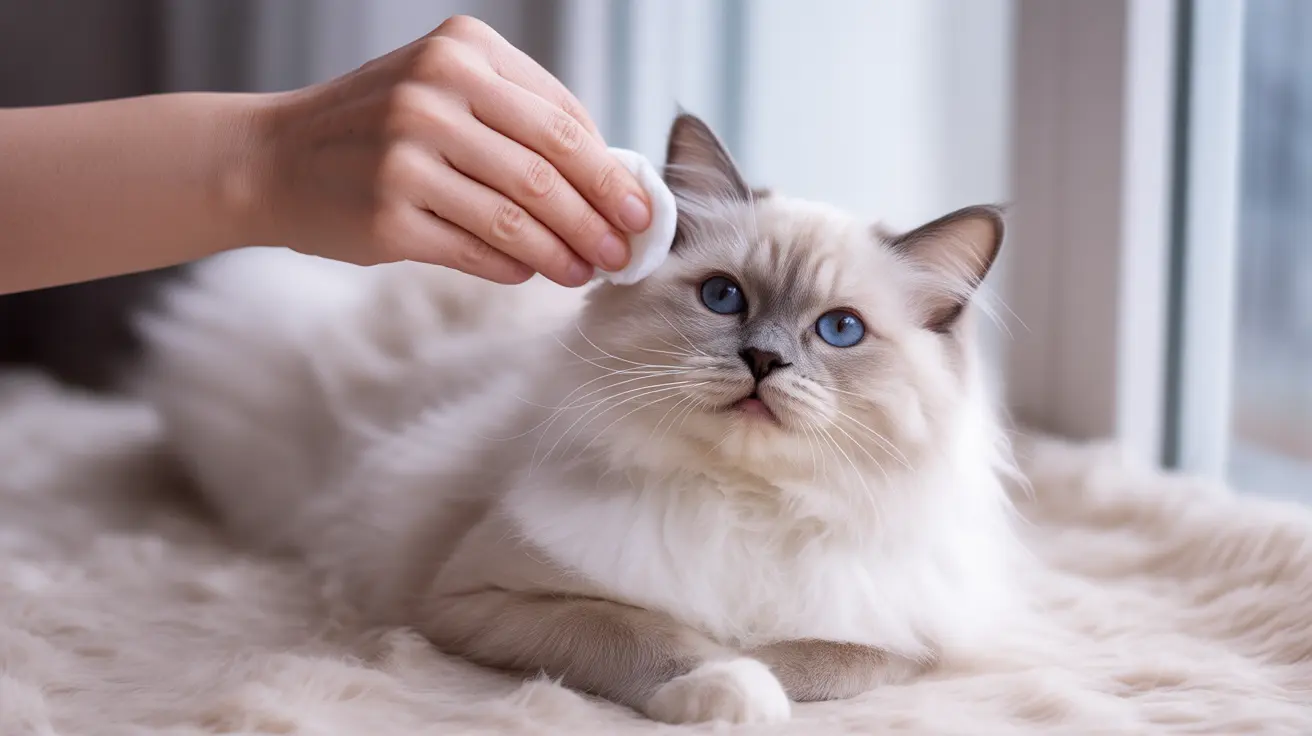Every cat owner has noticed those crusty or goopy deposits in the corners of their feline friend's eyes. While some eye discharge is perfectly normal, knowing how to clean cat eye boogers properly is essential for maintaining your pet's ocular health and comfort. This comprehensive guide will walk you through everything you need to know about managing your cat's eye discharge safely and effectively.
Understanding and properly addressing cat eye discharge isn't just about aesthetics – it's an important aspect of your pet's overall health care routine. Let's explore the proper techniques, necessary supplies, and crucial warning signs you should know about.
Understanding Cat Eye Discharge
Cat eye discharge is a natural process that helps protect and lubricate the eyes. The discharge consists of tears, proteins, oils, and other substances that trap debris and keep the eyes healthy. However, the type and amount of discharge can indicate different conditions:
- Clear, watery discharge: Usually normal, may increase with allergies
- Crusty brown discharge: Common morning accumulation
- Yellow or green discharge: May indicate infection
- Bloody discharge: Requires immediate veterinary attention
Normal vs. Problematic Eye Discharge
While some eye boogers are normal, others may signal health issues. Normal discharge is usually:
- Clear to light brown in color
- Small in amount
- Present mainly after sleeping
- Easy to wipe away
- Not accompanied by other symptoms
Essential Supplies for Cleaning Cat Eye Boogers
Before you begin cleaning, gather these vet-recommended supplies:
- Clean, soft cotton balls or gauze
- Sterile saline solution or distilled water
- Clean microfiber cloth
- Pet-safe eye wipes (optional)
- Towel for wrapping your cat
Step-by-Step Cleaning Process
1. Preparation
Start with clean hands and create a calm environment. If your cat is nervous, consider wrapping them gently in a towel, leaving only their head exposed.
2. Cleaning Technique
Follow these steps for safe and effective cleaning:
- Moisten a cotton ball with warm saline solution
- Gently wipe from the inner corner outward
- Use a fresh cotton ball for each eye
- Pat the area dry with a clean cloth
3. After-Care
Monitor the eyes for any signs of irritation or increased discharge following cleaning. Keep the area around your cat's eyes dry and clean.
Prevention and Maintenance
Regular maintenance can help minimize eye booger buildup:
- Daily gentle wiping for breeds prone to discharge
- Regular grooming around the eyes
- Keeping your home dust-free
- Managing environmental allergens
- Regular veterinary check-ups
When to Seek Veterinary Care
Contact your veterinarian if you notice:
- Excessive or colored discharge
- Squinting or eye rubbing
- Redness or swelling
- Changes in vision or behavior
- Persistent or worsening symptoms
Frequently Asked Questions
How do I safely clean my cat's eye boogers at home without causing irritation?
Use a soft, damp cotton ball with sterile saline solution, wiping gently from the inner corner outward. Never use harsh chemicals or human eye products, and always use fresh materials for each eye.
What are the common causes of excessive eye discharge or boogers in cats?
Common causes include allergies, infections, blocked tear ducts, conjunctivitis, and breed-specific characteristics. Environmental irritants like dust or smoke can also increase discharge.
When should I be concerned about my cat's eye boogers and see a veterinarian?
Seek veterinary care if you notice yellow, green, or bloody discharge, excessive tearing, squinting, rubbing, redness, or swelling around the eyes. Any sudden changes in discharge amount or consistency warrant professional attention.
What supplies and techniques do vets recommend for cleaning cat eye discharge?
Veterinarians recommend using sterile saline solution or distilled water, clean cotton balls or gauze, and pet-specific eye wipes. The technique should be gentle, moving from the inner eye corner outward, using fresh materials for each eye.
How can I prevent my cat from getting irritated eyes and excessive boogers regularly?
Prevent eye irritation by maintaining a clean environment, managing allergens, regular gentle cleaning, and keeping your cat's face groomed. Some breeds may be more prone to discharge, requiring more frequent maintenance.






